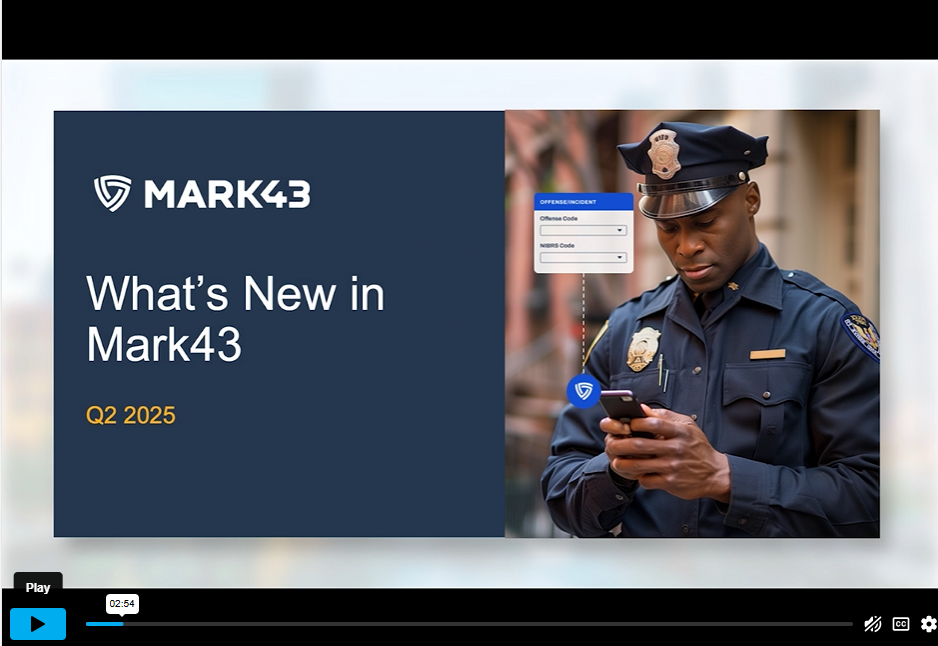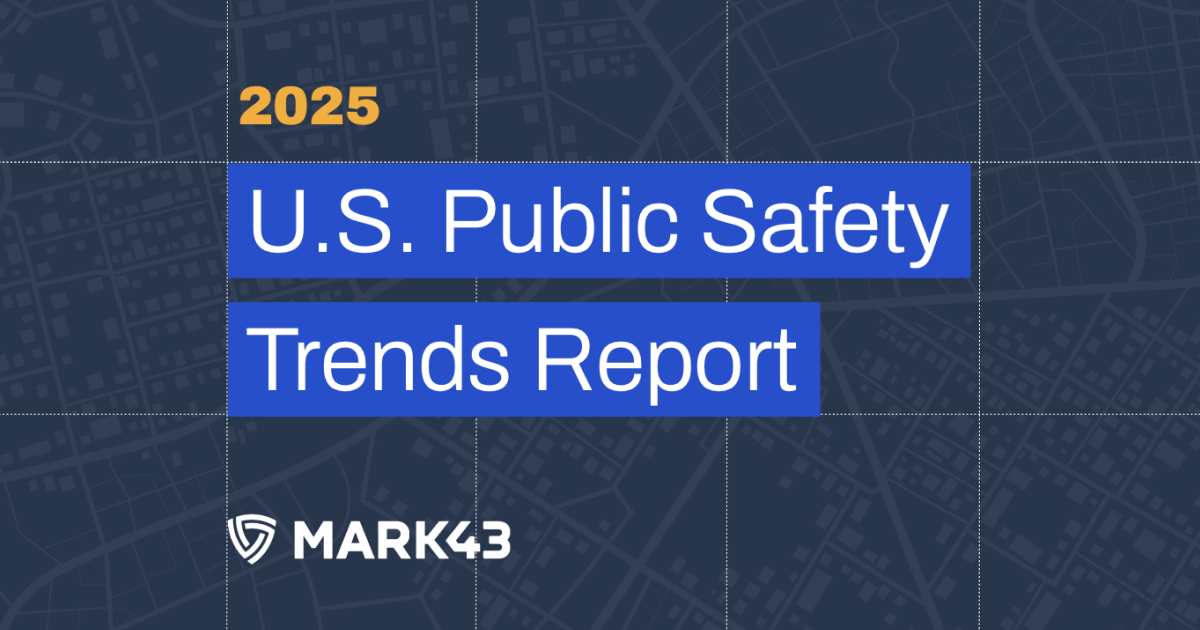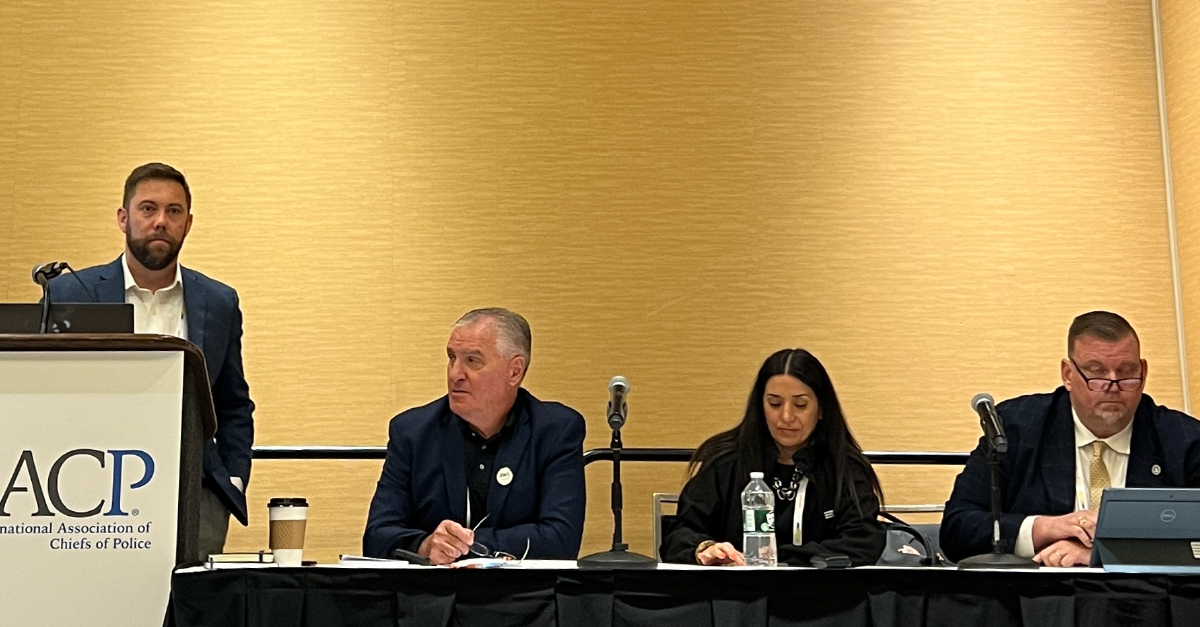
In 2019, the San Antonio Police Department (SAPD) knew their records management system (RMS) wasn’t meeting the department’s needs. Then Community Engagement & Technology Captain Karen Falks led the team who upgraded SAPD from a legacy records management solution to Mark43 RMS, a cloud-native RMS for public safety agencies, establishing best practices and innovative ways of thinking along the way.
I recently sat down with Karen Falks, now Deputy Chief of Police at SAPD, and Ellen Hempen, Executive Vice President of GovExec and Co-Founder of The Atlas for Cities, to discuss how SAPD modernized its RMS.
During the webinar, Deputy Chief Falks shared several critical steps to modernize police reporting and advice on how to make the purchasing and implementation process as smooth as possible.
Start by Defining “Why?”
When Deputy Chief Falks realized it was time to replace SAPD’s legacy RMS with modern technology, she decided to start the upgrade with one simple question: Why?
Why does SAPD’s RMS need to be replaced? Why is now the time to modernize technology?
While several factors, like needing to comply with the January 2021 National Incident-Based Reporting System (NIBRS) reporting mandate and the desire to increase operational efficiency, played into the decision to upgrade SAPD’s RMS, there was another big issue weighing on Deputy Chief Falk’s mind.
According to Deputy Chief Falks, “We needed better technology for our officers.”
Often, public safety technology may meet the needs of an agency at implementation, but as public safety evolves the technology stays stagnant. In the case of SAPD, the legacy system was implemented in 2009, and by 2019 the antiquated system was no longer meeting the needs of SAPD.
Receive Buy-in from Internal & External Stakeholders
It’s critical to ensure each stakeholder understands why the old system is no longer viable and what new issues the new system should address. It’s equally essential for project management to solicit input from stakeholders about what features and functions are must-haves in the new system.
Deputy Chief Falks explained it well when she said, “it is so important to include everybody.”
In the case of SAPD, getting initial buy-in for a new RMS was not difficult. In fact, according to Deputy Chief Falks, there was a celebration throughout the department when the search for a new RMS was announced. SAPD continued to involve stakeholders throughout the entire project lifecycle to ensure there were no issues on go-live day.
Secure Grant Money to Help Offset the Cost
One of the challenging dynamics of public safety is that budgets are shrinking while operating costs are growing. As webinar host, Ellen Hempen said, “Funding is always a question.”
SAPD was able to secure funding from the city council, the state of Texas, and the federal government to modernize their reporting. Deputy Chief Falks said the availability of funding was due, in part, to the availability of federal grants ahead of the national NIBRS mandate. (U.S. agencies looking for federal funding can visit the U.S. Department of Justice’s JustGrants program website to learn more about federal grant options).
If federal/state funding isn’t an option for your agency, consider starting with projects that will increase operational efficiency or decrease operational costs once implemented. For example, the Washington, D.C., Metropolitan Police Department enabled officers to spend more time in the field by reducing report writing time by 80 percent with a new RMS, effectively adding more than 110 officers to patrol.
Define Data Migration Needs
What legacy data should be transferred to the new system? How should legacy data fields be mapped to the new system? What data must be accessible in the new system before the system launches to end-users? What data should be migrated after launch? Where should legacy data not moving to the new system be stored?
These are all important questions an agency has to ask when implementing a new system. In my experience, some agencies want to migrate all of the data, some agencies want to migrate some of the data into the new system and place the remaining data in their data warehouse, and some agencies want to start fresh because their old system is full of bad data.
This is an important decision for agencies, but it’s also one that can’t be delayed. Deputy Chief Falks described the decision about data migration as “a key decision that needs to be made, right up front, before you get started.”
Work as a Team
A project’s success depends on hundreds of factors, but perhaps the most critical is how the project team functions. A skilled project manager plays a huge role in the team culture, but it’s equally important to recruit qualified and responsible individuals to the project team.
It’s also critical that external team members, like consultants and vendor employees, fit within the team and agency culture. Project managers can facilitate a cultural fit by making sure all members of the team understand:
- The value of the project to the agency
- The preferred methods of communication
- The decision-making process and team structure
- Why the agency chose a particular vendor and solution
Individual project team members can facilitate a cultural fit when they:
- Establish trustworthiness and credibility through their actions
- Follow established workflows
- Keep commitments and proactively explain any delays
Bidirectional trust, transparency, and accountability are crucial in the agency-vendor relationship. If teammates don’t trust each other, then the flow of information is limited and breakdowns in communication cause unnecessary delays and poor project outcomes.
You can take an in-depth look at each essential step and discover more takeaways from San Antonio’s successful RMS modernization when you check out the on-demand webinar, “How They Did It: Modernizing Police Reporting.” Or take a look at the next blog in the series, 4 Benefits of a Modern RMS: Lessons from San Antonio Police Department.







